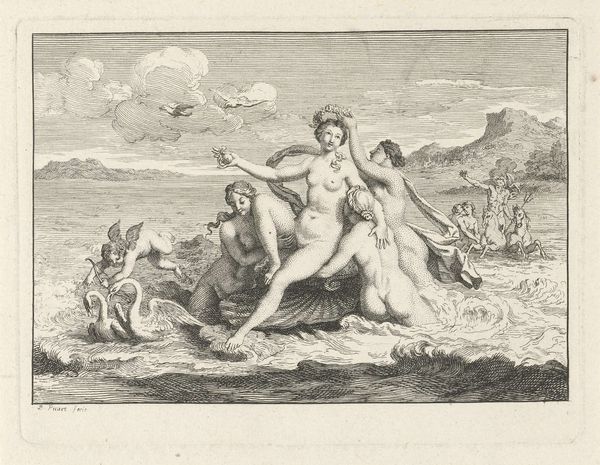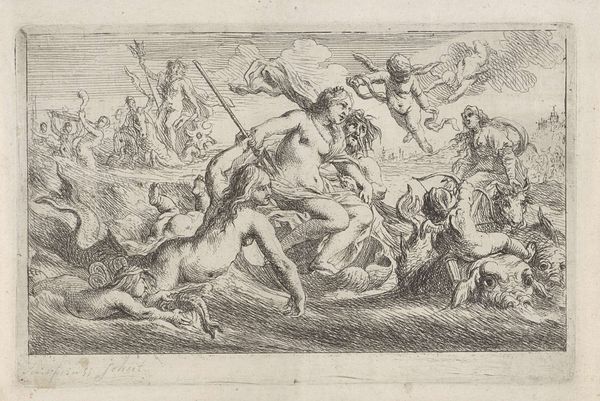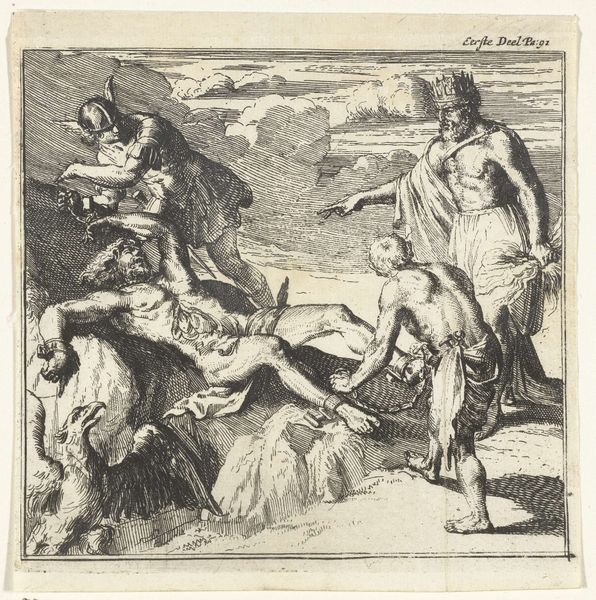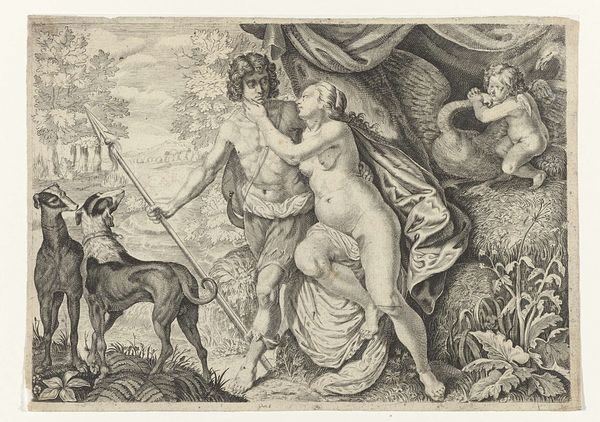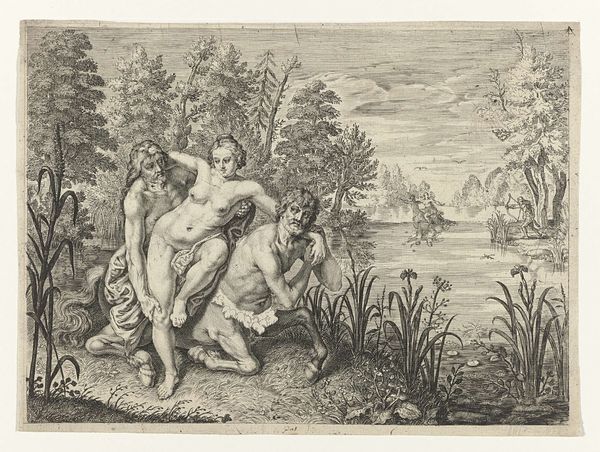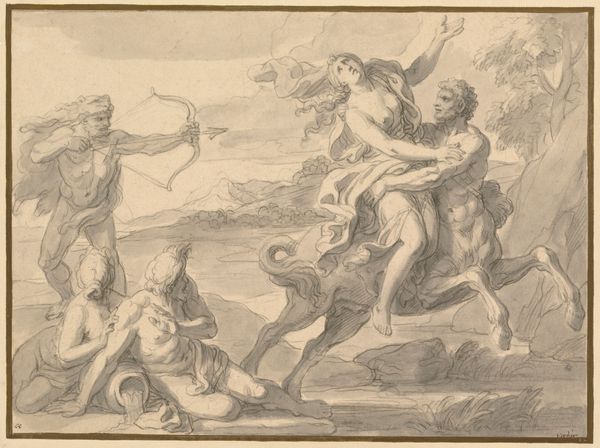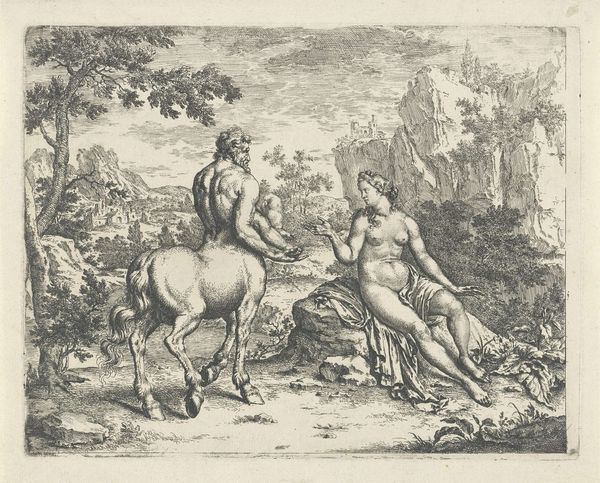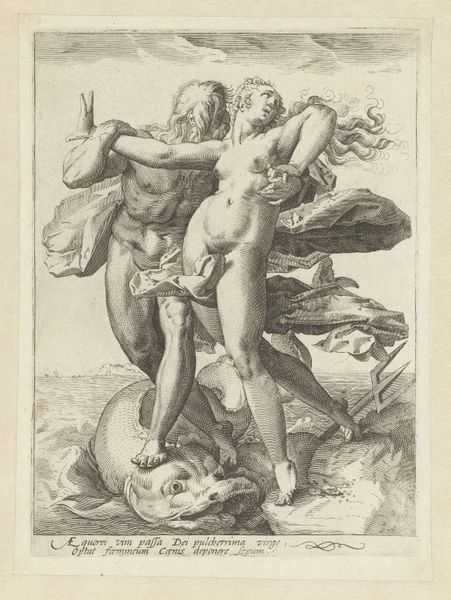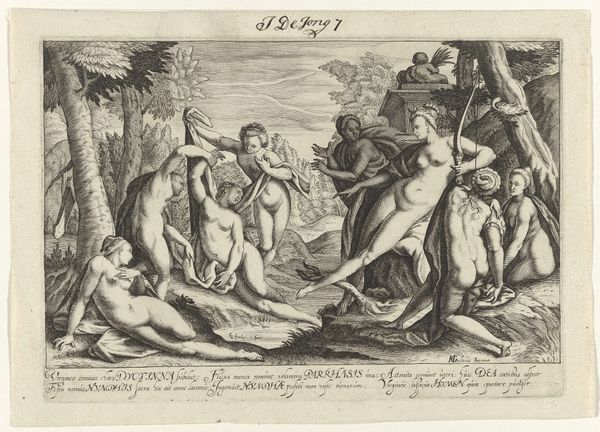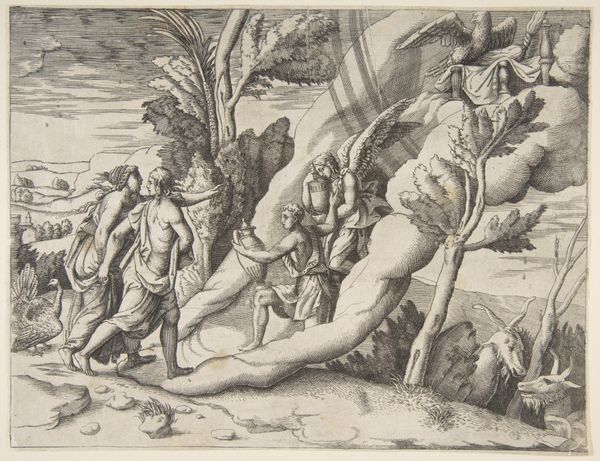
print, engraving
#
allegory
#
baroque
# print
#
figuration
#
history-painting
#
nude
#
engraving
Dimensions: height 163 mm, width 226 mm
Copyright: Rijks Museum: Open Domain
Editor: This is "Neptunus en Caenis," an engraving by Crispijn van de Passe the Younger, dating from around 1636 to 1670. It's currently held at the Rijksmuseum. My first impression is that it’s a bit unsettling; Neptune’s pose is so deferential, yet there's something about Caenis’ expression that seems… almost indifferent? What symbolic readings do you draw from it? Curator: The symbols at play are richly layered, aren't they? Neptune, God of the Sea, in a posture of supplication, immediately inverts expected power dynamics. He seems enthralled by Caenis. It pulls at cultural memories of transformation and forced compliance. Does it remind you of similar themes explored in other Baroque works? Editor: It does. I am recalling similar tensions in some of Bernini's sculptures. The power dynamic seems quite turbulent, and that also reflects the times. Considering it is also a period marked by rigid social structures. It all reads so strange. It makes you think, what is happening there? Curator: Exactly. The sea, a potent symbol of the unconscious, serves as the backdrop. See those hippocampus fighting? And Caenis herself; her transformation from woman to invincible man embodies fluidity of identity and resistance against forced submission, and of female strength and power. How does this depiction challenge or reinforce ideas of male dominance during that period, in your opinion? Editor: It challenges it! Although Neptune is a powerful God, here, he's subjugated, literally kneeling. The transformation narrative combined with Neptune's submission gives agency to Caenis. It almost makes it subversive. Curator: Precisely. What initially seemed a straightforward mythological scene opens up to broader interpretations of power, identity, and perhaps even nascent feminist readings. The emotional weight of visual symbols transforms over time, right? Editor: Absolutely! It's fascinating to see how this print, on the surface, seems like just another Baroque mythological scene, but the symbolism is charged. Thanks! Curator: My pleasure. It always helps to revisit the stories we tell through our cultural symbols.
Comments
No comments
Be the first to comment and join the conversation on the ultimate creative platform.
